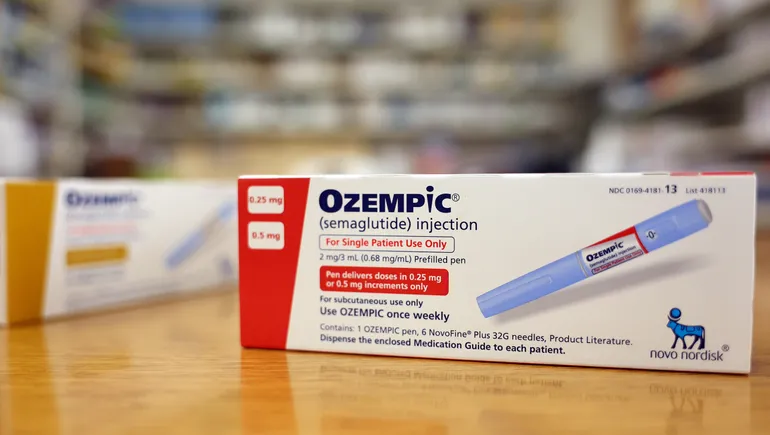One of the biggest changes in the second cycle is that drugmakers will have more chances to negotiate with CMS. This will allow for more flexibility and potentially better outcomes for both parties involved. Additionally, drugs with biosimilar and generic competition will not be considered for the negotiation list, ensuring that innovative treatments are prioritized.
It’s important to note that not all drugs projected to be included in the negotiation list will make the final cut. CMS has strict criteria for selection, and there are uncertainties that researchers and policy analysts cannot predict perfectly. However, based on the eligibility criteria and projected Medicare spending, drugs like Novo Nordisk’s semaglutide products Ozempic, Wegovy, and Rybelsus are likely to be included in the 2027 negotiation list.
Other drugs that could potentially be included in the list are GSK’s COPD drug Trelegy Ellipta, Astellas Pharma’s prostate cancer therapy Xtandi, Boehringer Ingelheim’s lung disease drug Ofev, and Bristol Myers Squibb’s Pomalyst, a blood cancer treatment. The final drug list for 2027 will ultimately depend on CMS’ selection process and eligibility criteria.
Overall, the Medicare drug price negotiation program is poised to bring significant changes to the pharmaceutical industry. With new drugs set to be included in the negotiation list and changes to the program based on feedback, the landscape of drug pricing and access could see a significant shift in the coming years. It will be important to closely monitor the developments in the program and how they will impact both patients and drug manufacturers.
The first round of optional negotiation meetings for drug pricing under Medicare will commence after CMS presents its initial offer by June 1. Pharmaceutical companies raised concerns about the negotiation process during the first cycle, but some industry executives downplayed the financial impact of the new pricing structure that Medicare will implement starting in 2026.
In addition to the negotiation meetings, drug manufacturers have the opportunity to submit written offers and counteroffers during the second cycle through a price exchange mechanism. CMS emphasized that these revisions to the negotiation process aim to facilitate constructive dialogues between the agency and participating drug companies throughout the negotiation period.
Despite the modifications made to the negotiation process, pharmaceutical companies continue to challenge the legality of the negotiations in court. As of December, there were nine ongoing lawsuits filed by pharma companies and industry organizations contesting the Medicare drug price negotiation program based on the Inflation Reduction Acts. According to the Kaiser Family Foundation (KFF), legal challenges from the pharmaceutical industry have not been successful thus far.
The ongoing debates and legal battles surrounding the Medicare drug price negotiation program highlight the complexities and contentious nature of reforming drug pricing policies in the healthcare system. Stay tuned for further updates and developments as the negotiation process unfolds.


